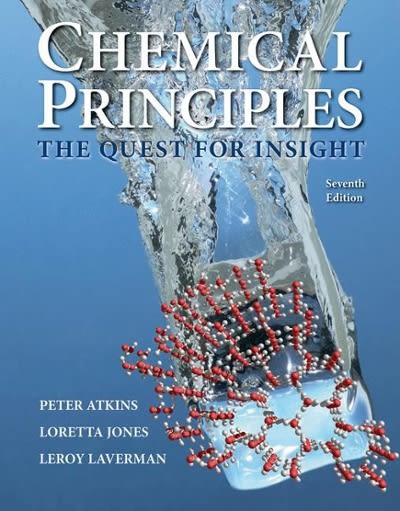Iron pyrite, FeS 2 , is the form in which much of the sulfur exists in coal.
Question:
Iron pyrite, FeS2, is the form in which much of the sulfur exists in coal. In the combustion of coal, oxygen reacts with iron pyrite to produce iron(III) oxide and sulfur dioxide, which is a major source of air pollution and a substantial contributor to acid rain.
(a) Write a balanced equation for the burning of FeS2 in air to produce iron(III) oxide and sulfur dioxide.
(b) Calculate the mass of Fe2O3 that is produced from the reaction of 75.0 L of oxygen at 2.33 atm and 150.°C with an excess of iron pyrite.
(c) If the sulfur dioxide that is generated in part (b) is dissolved to form 5.00 L of aqueous solution, what is the molar concentration of H2SO3 in the resulting solution?
(d) What mass of SO2 is produced in the burning of 1.00 t (1 t = 103 kg) of high-sulfur coal, if the coal is 5% pyrite by mass?
(e) What is the volume of the SO2 gas generated in part (d) at 1.00 atm and 25 °C?
(f) One way to remove SO2 from exhaust gases is to remove it in the reaction CaO(s) + SO2 (g) → CaSO3(s). In a test of this reaction, a mixture of sulfur dioxide and nitrogen gases is prepared at 25°C in a vessel of volume 500. mL at 1.09 atm. The mixture is passed over warm calcium oxide powder, which removes the sulfur dioxide, and is then transferred to a vessel of volume 150. mL, where the pressure is 1.09 atm at 50. °C.
(i) What was the partial pressure of the SO2 in the initial mixture?
(ii) What mass of SO2 was present in the initial mixture?
(g) The van der Waals parameters for SO2 are a = 6.865 L2· atm · mol –1 and b 5 0.0568 L · mol –1. For SO2 (g) confined in a 1.00-L vessel at 27 °C, calculate the pressure of the gas by using the ideal gas law and the van der Waals equation for 0.100 mol to 0.500 mol SO2 at 0.100-mol increments.
(h) Calculate the percentage deviation of the ideal value from the value calculated from the van der Waals equation at each point in part (g).
(i) Under the conditions in part (g), which term has the larger effect on the pressure of SO2, the intermolecular attractions or the repulsions?
(j) If those gases are considered to be ideal for which the observed pressure differs by no more than 5% from the ideal value, at what pressure does SO2 become a “real” gas?
Step by Step Answer:

Chemical Principles The Quest For Insight
ISBN: 9781464183959
7th Edition
Authors: Peter Atkins, Loretta Jones, Leroy Laverman





